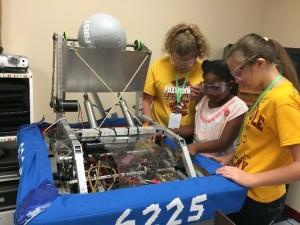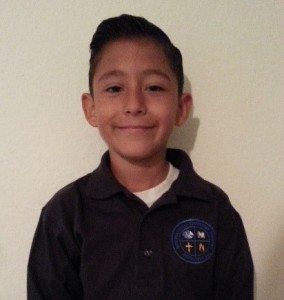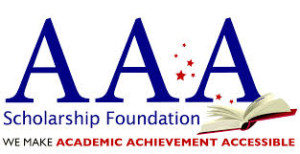Jiovani Hernandez-Almanza
Excel Christian School
Reno/Sparks, NV
Jiovani Hernandez-Almanza struggled in school for as long as his mother, Elizabeth Almanza, could remember. However, with the right academic setting, supportive teachers and financial assistance from the AAA Scholarship Foundation, Jiovani has completed an incredible turnaround, transitioning from a failing student to one who brings home A’s and B’s and has goals for the future.
Overcoming obstacles is nothing new to the Almanza family. When Jiovani was four years old, his parents divorced and his father left the country, leaving his mother to care for him alone. Despite the devastation, Elizabeth vowed to take care of her small family, which included temporarily moving in with her parents to get on her feet. Determined to make it on her own, Elizabeth often worked two jobs to make ends meet. Things were tough at times, but the family of two made it one day at a time.
However, one issue that they continued to struggle with was Jiovani’s performance in school. Jiovani had attended his area public school since Kindergarten, but over the years, Jiovani’s problems in school began to worsen with a mix of social influences and peer pressure from fellow students. By the time he reached middle school, his grades had plummeted to F’s in all of his classes. Fearing for her son’s future, Elizabeth looked into the other school options in their area and found what she thought would be a good match for Jiovani at Riverview Christian Academy. She made sacrifices and scraped up enough money to enable him to enroll in Riverview during his 7th grade year.
Elizabeth’s instincts about the school were right. After only one semester at the school, Jiovani brought his grades up from F’s to A’s and B’s.
“I saw such a drastic, positive change in my son in those first few months,” Elizabeth recalls. “The teachers and staff at the school really showed an interest in helping him overcome his struggles and pushing him to succeed, and that made all the difference in the world.”
While Elizabeth was overjoyed with her son’s academic improvement, she still worried about being able to afford the tuition for Jiovani to continue at the school the following year. She was struggling to make ends meet and affording the tuition seemed out of reach. However, despite her resistance to ask for financial help, a secretary at Riverview encouraged her to apply for a tax credit scholarship from the AAA Scholarship Foundation. When she received Jiovani’s scholarship approval letter a short time later, she was overcome with joy and a sense of relief for her son’s future.
Since receiving the scholarship, Jiovani graduated from 8th grade at Riverview Christian and began his freshman year at Excel Christian School in the fall of 2016. He continues to thrive academically with a strong interest in science, and has even begun playing football for the school team, something he always wanted to do. Additionally, although he still has a few years before graduation, Jiovani is already thinking about his future plans. For now, that includes aspirations of joining the United States Navy and serving as a firefighter.
“Since Jiovani was little, I have been determined to provide a great life for him,” Elizabeth Almanza says. “We have had our share of challenges along the way, but if I see my son succeed, that is all that matters. The AAA Scholarship Foundation and its donors are making this success possible by giving my son access to educational opportunities that will help him have a promising future, and for that, we are so grateful.”
About AAA Scholarship Foundation
The typical AAA Scholarship student is an ethnic minority living with a struggling single parent/caregiver in a high crime community. The average household income of families accepted to receive scholarships is $23,559 for a family of four. Many children are either below grade level, failing at their previous school or both when they receive a scholarship. Parents, who find their children in these circumstances and care about their future, look for viable options. They seek an atmosphere that challenges their child to reverse inadequate learning and/or social patterns and the potential lifelong negative impact. They wish to change their child’s learning environment, acquaintances, and the unfortunate predictable outcomes associated with school failure.
AAA Scholarships are funded in Alabama, Arizona, Florida, Georgia, Nevada and Pennsylvania by corporations that redirect a portion of their state tax liability to the AAA Scholarship Foundation in exchange for a tax credit (dollar for dollar in Alabama, Arizona, Florida, Georgia and Nevada, and up to 90 percent in Pennsylvania). The AAA Scholarship Foundation is one of the only approved Scholarship 501(c)(3) Nonprofit Organizations exclusively serving qualifying low-income, disabled and/or displaced students through these Scholarship Tax Credit programs. AAA Scholarship Foundation provides your company with the convenience and efficiency of a single-solution for participating in multiple state tax credit scholarship programs. For more information or to learn how your corporation can participate in the program, visit www.AAAScholarships.org, or contact Kerri Vaughan at kerri@aaascholarships.org or 888 707-2465 ext. 730.
Click here for a pdf copy of this student spotlight.









